It’s important to provide nectar through the seasons (except winter, of course, at least here in Central NY).
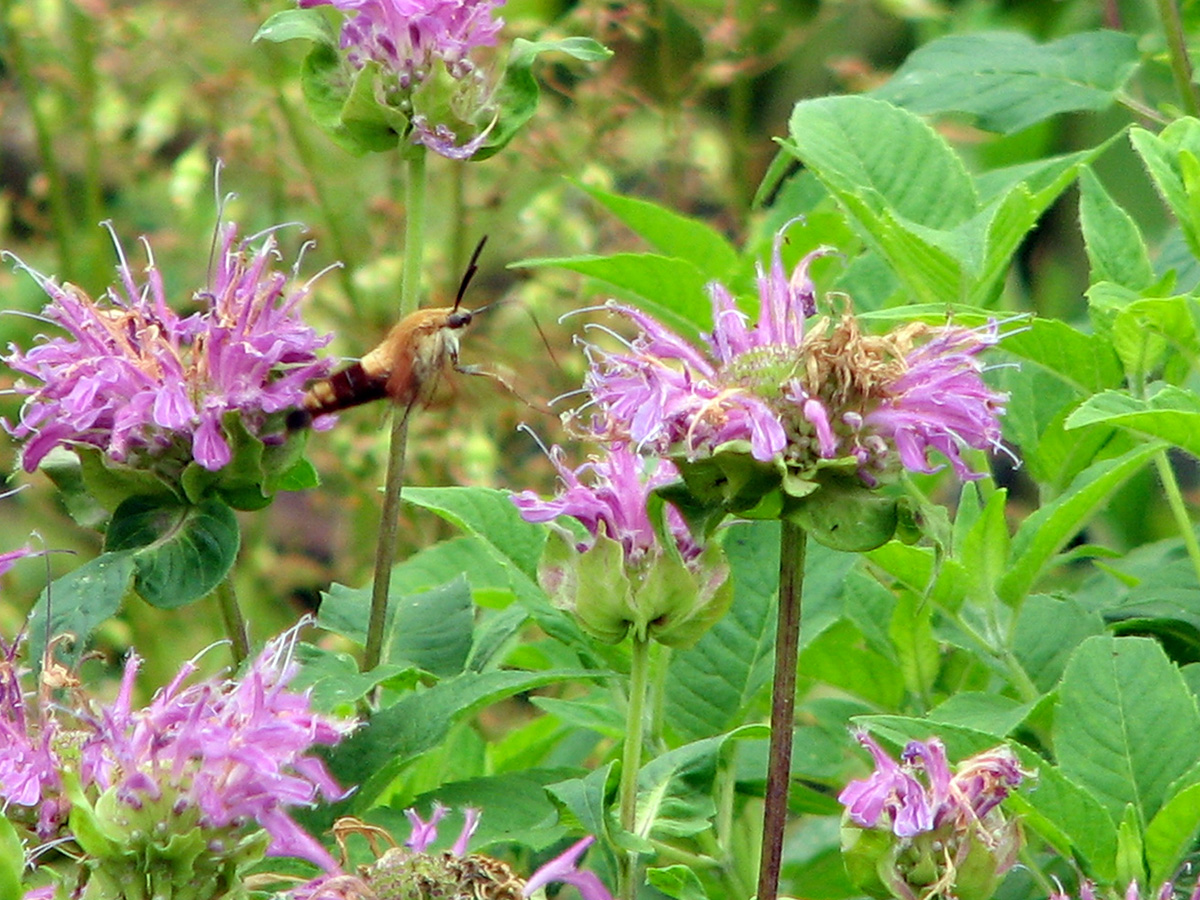
Many plants have nectar for butterflies, other insects, and birds, but native plants are the best source. Research has found that native plants are four times more attractive to pollinators than are non-natives! And even if other non-natives might appeal to some insects, the natives generally have other important habitat properties.
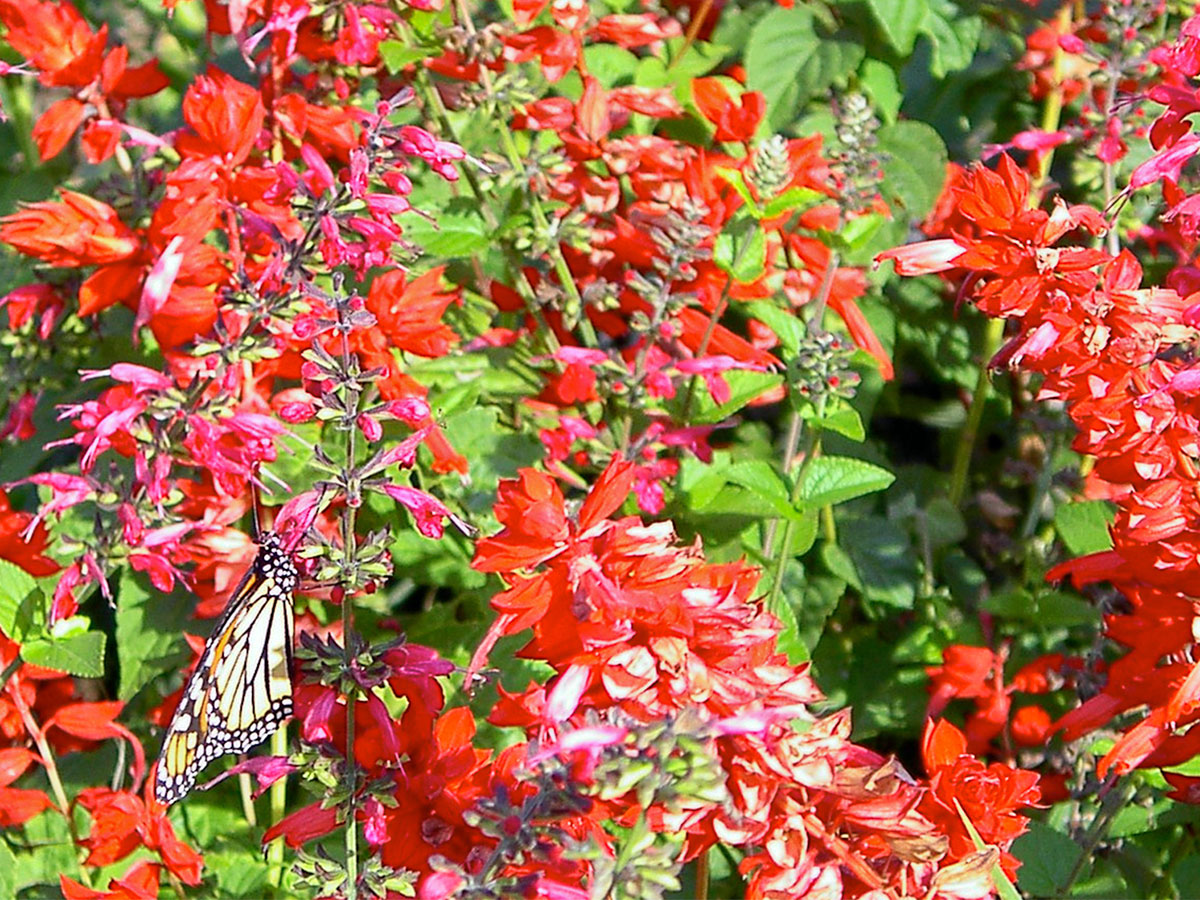
A monarch butterfly showed me the importance of native plants. The year the above photo was taken was the first year I planted the ‘Lady in Red’ cultivar of a Southeast-native salvia (Salvia coccinea) and the last year I planted the more common hybrid salvia bedding plant, mixed together in this bed. (The bedding salvia is the one that has larger, redder flowers.)
The butterfly nectared ONLY at the natives throughout the bed, ignoring the hybrids. The hybrid bedding salvia, of course, was hybridized BY people FOR people. It has the big, vivid blossoms and easy-to-grow qualities people like, while apparently losing the nectar of its native counterpart.
This was one of our early choices of a “native” plant, but now we are more careful since not all cultivars are pollinator-friendly, and plants not native to this area might not have all the benefits of a plant truly native to our region.
Below is a small sampling of some of our favorite nectar plants though the seasons, but more nectar plants are shown on the Food for Butterflies and the Food for Bees pages.
Nectar and pollen in spring
Early sources of nectar are important, but who knows how changes in the climate — already happening — will affect how the sources of nectar and pollen and the emergence of insects sync up? Will there be mismatches?

This bee can hardly wait for this pussy willow (Salix discolor) to transition from the more-familiar gray catkins to being in full flower, full of nectar.
Before we grew this shrub, I never noticed this flowering phase followed the catkins. Now it’s one of the things I look forward to each spring.
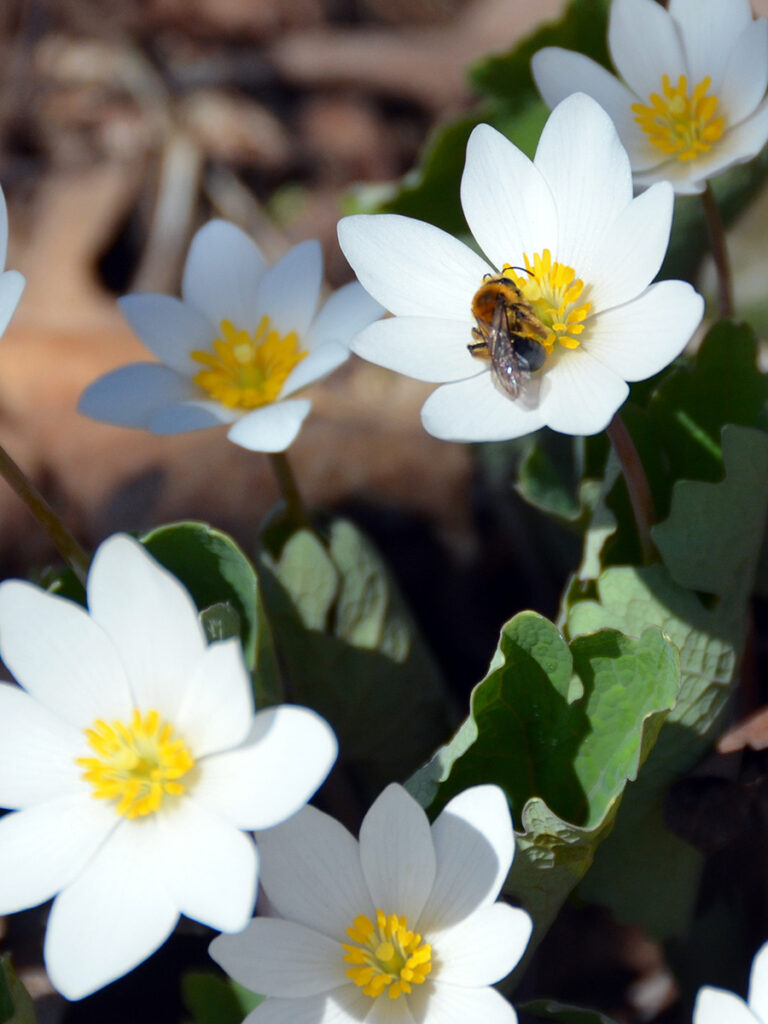
Bloodroot is one of the earliest blooming wildflowers and I saw several types of bees buzzing around. Unfortunately, I initially had more double bloodroots than the single-petaled species. The double ones are beautiful, but so are the single-petaled flowers, and bees can reach the nectar more easily. As the patch multiplies, I’m removing the double-flowered ones so the truly native single-flowered plants can flourish.
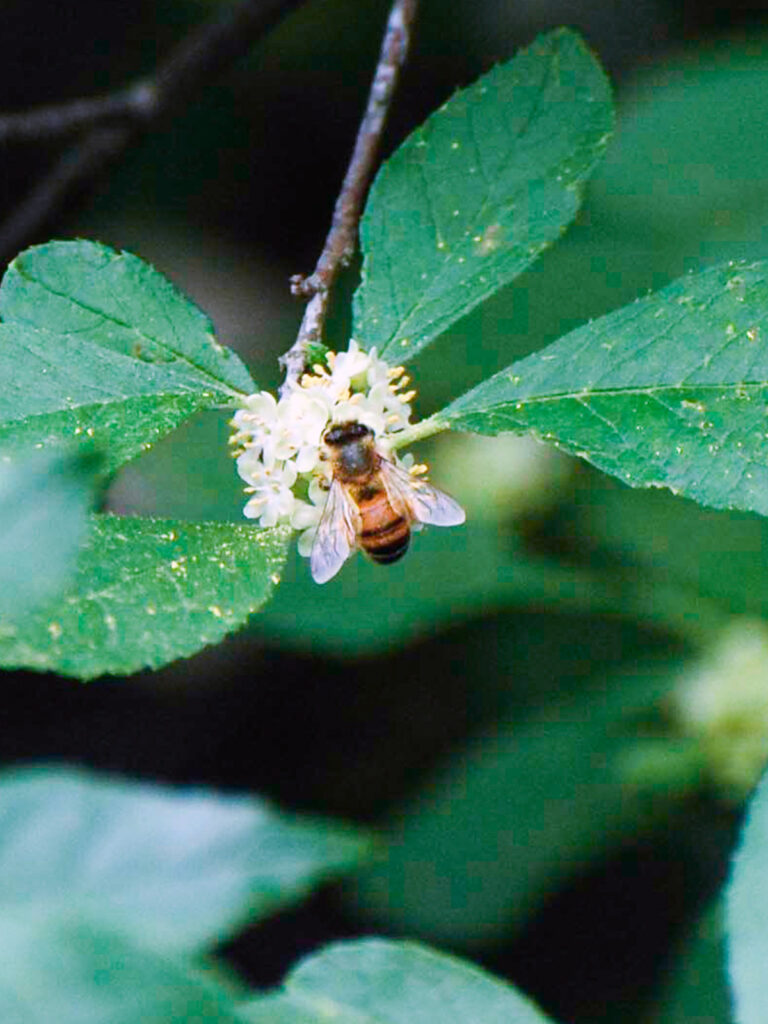
The nectar winterberry (Ilex verticillata) provides is a bonus since we planted these for their berries, which birds enjoy in the winter.
We were surprised to see so many insects buzzing about these really tiny flowers. Though tiny, they must be chock-full of nectar.
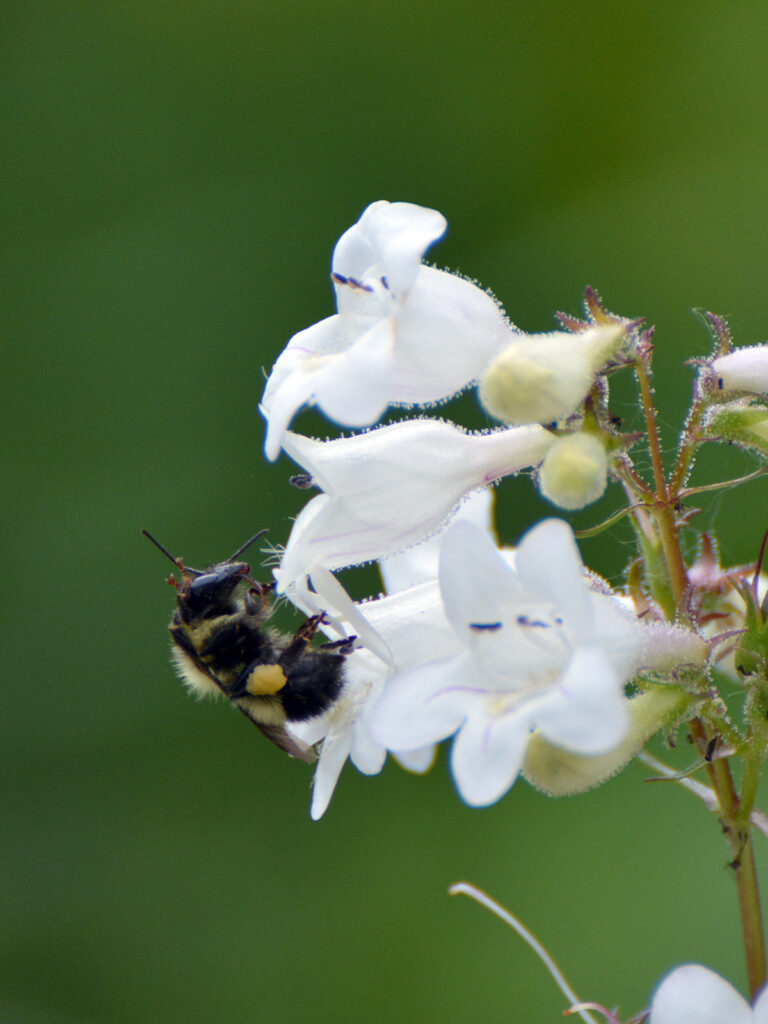
Penstemon (Penstemon digitalis), sometimes called beardtongue, is a bee favorite in late spring and early summer. Hummingbirds also visit.
Nectar and pollen in summer
Lots and lots of summer-blooming native plants are full of nectar. Skip those non-native annuals sold as bedding plants and go native!
Below are just a few; more will be described in the Creatures sections and in the Plants section.
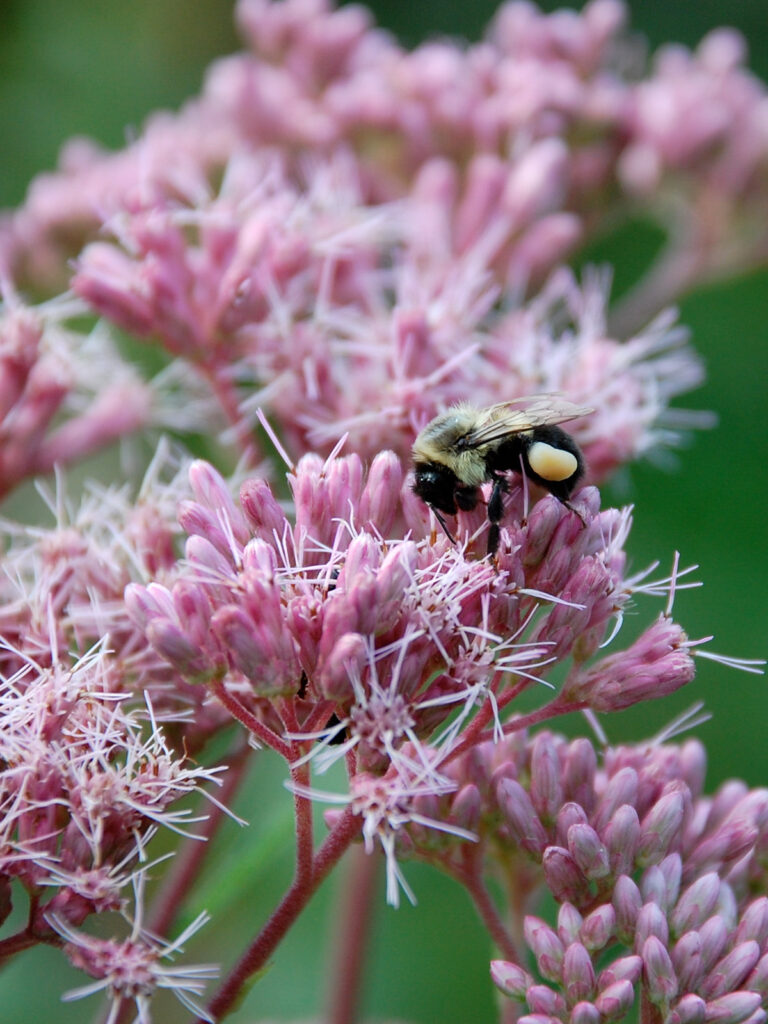
Joe-pye (Eupatorium maculatum) is a tall stately plant — one of my favorites. It’s hard to fathom why its common name is “joe-pye weed“, but I guess the first European settlers considered anything that grew naturally in this country was so unlike what they were used to that they considered them “weeds.” I’m trying to just call them “joe-pye,” dropping the “weed.”
Joe-pye can grow quite tall. I plant some behind shorter plants, but I also cut some back early in the season (in CNY, around mid-June) so they don’t grow so tall. It then delays flowering, so I don’t cut them all, but it’s nice to have some smaller, bushier plants. This also extends the season somewhat, which I’m sure benefits the bees and butterflies.
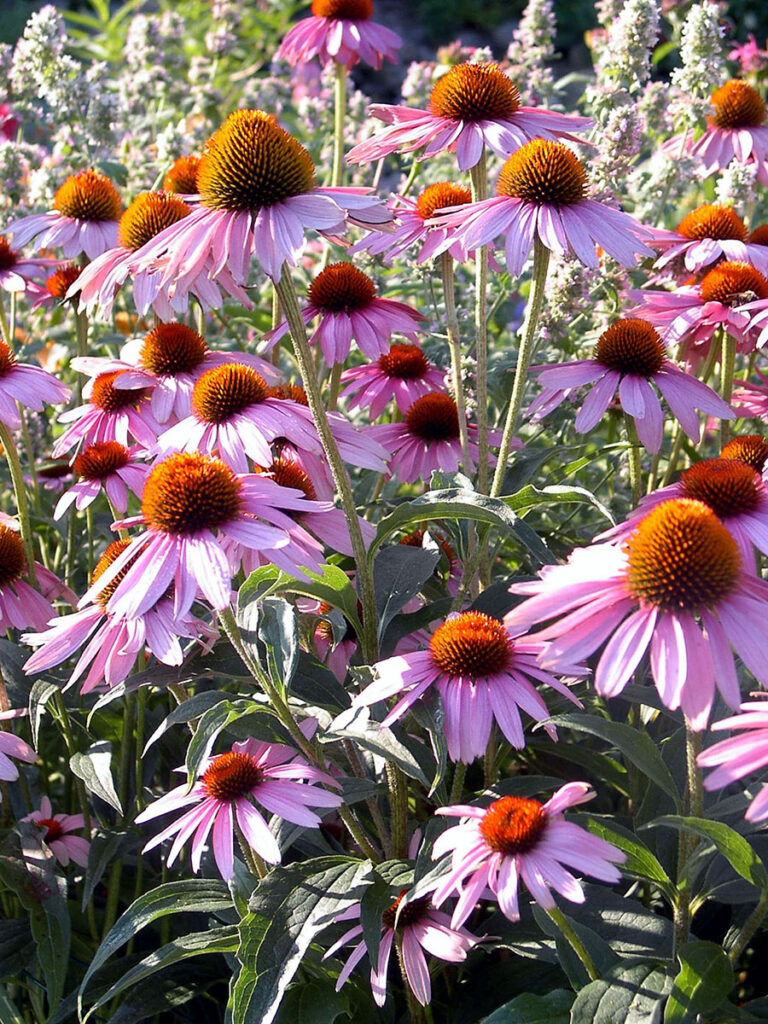
Purple coneflower (Echinacea purpurea) is a favorite nectar plant for butterflies, bees, and other insects. It’s easy to grow, too.
I favor the plain species rather than the new cultivars, most of which are garish novelties.
Those double-flowered cultivars people love? Bees can’t even reach any nectar that might be buried in there. And there may not even be any buried there since the plant’s energy is devoted to making those doubled petals.
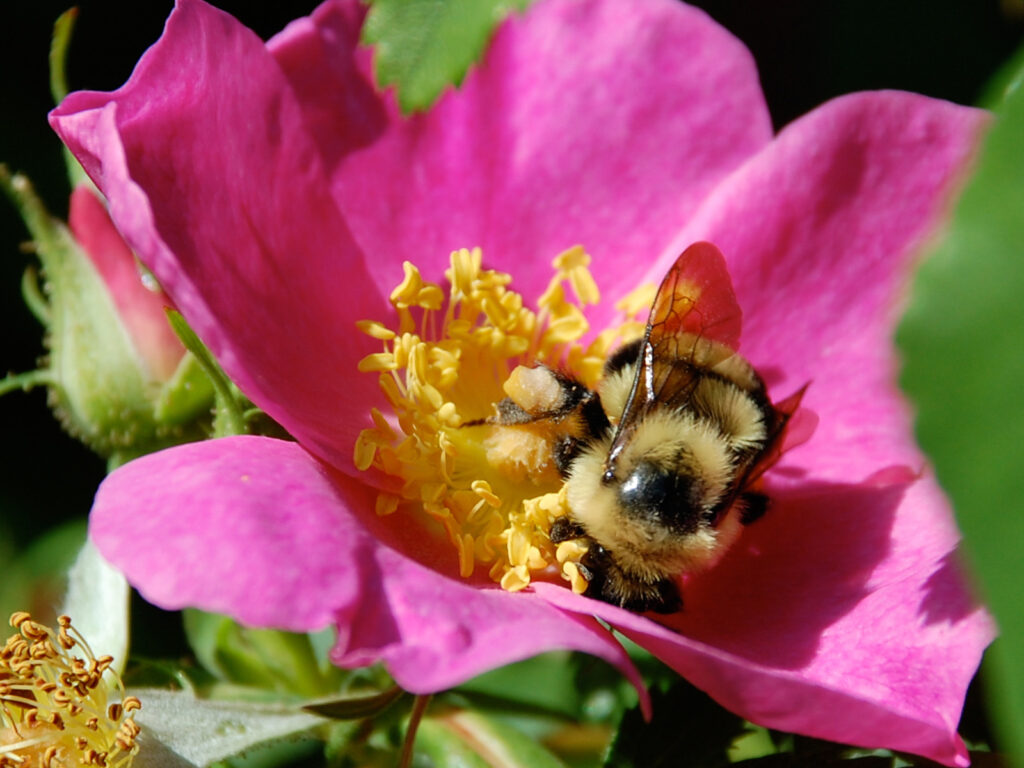
It’s easy for bees to get to the nectar of this native rose (Rosa virginiana).
Imagine how difficult it would be to get nectar from a hybrid tea rose with all those petals — assuming there was any nectar there to begin with.
Nectar and pollen in fall
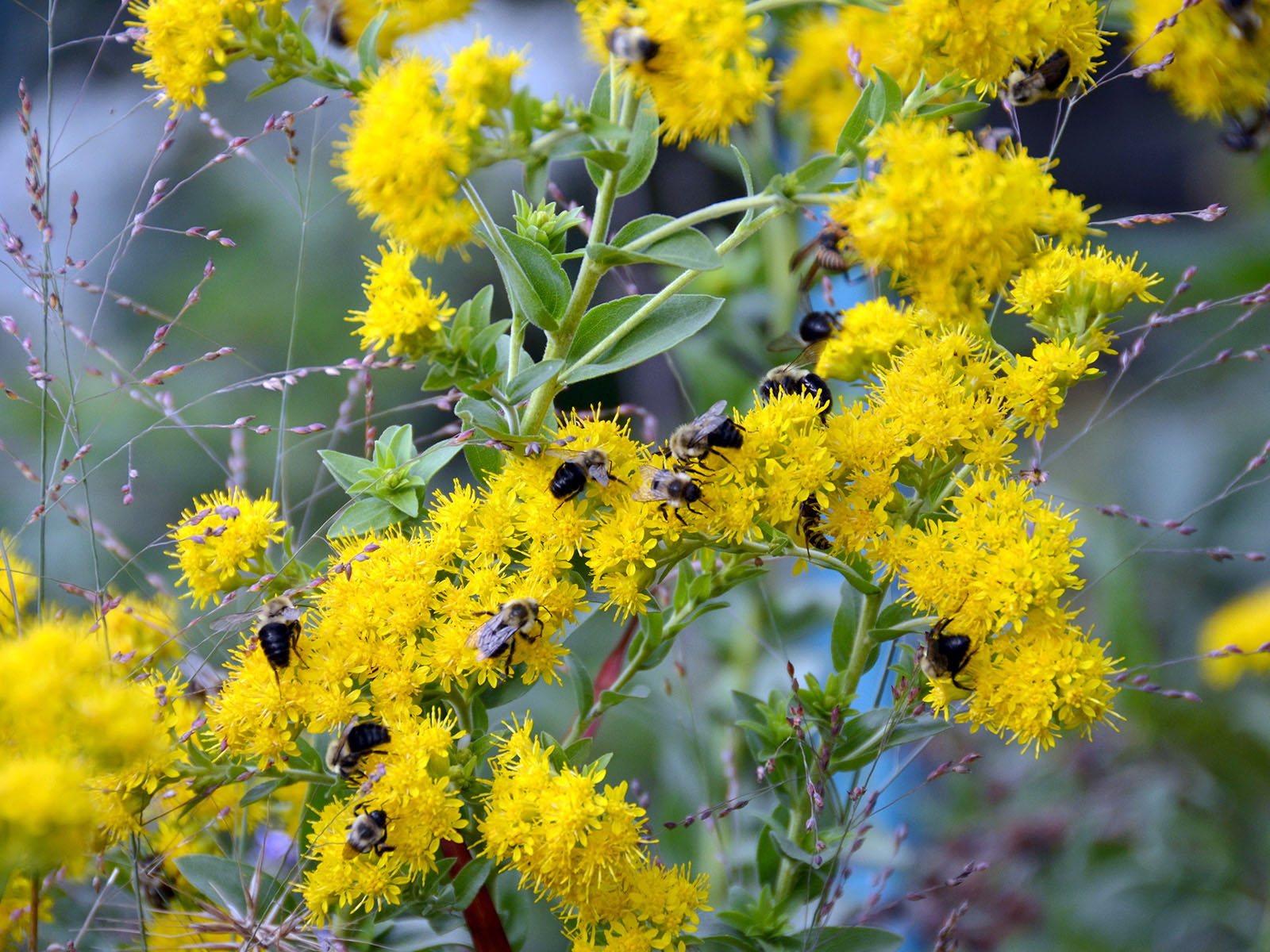
Stiff goldenrod (Solidago rigida) is one of many beautiful species of goldenrods. From the number of bees (shown in the photo), it’s clearly a very good nectar plant.
Many people think that the common Canada goldenrod (S. canadensis) they see growing en masse in fields IS goldenrod, but it’s only one of many kinds. (Note: Goldenrods are all in the genus Solidago.) We don’t grow Canada goldenrod but we have many other kinds of goldenrods.
And goldenrods are NOT the source of allergies. Learn more…
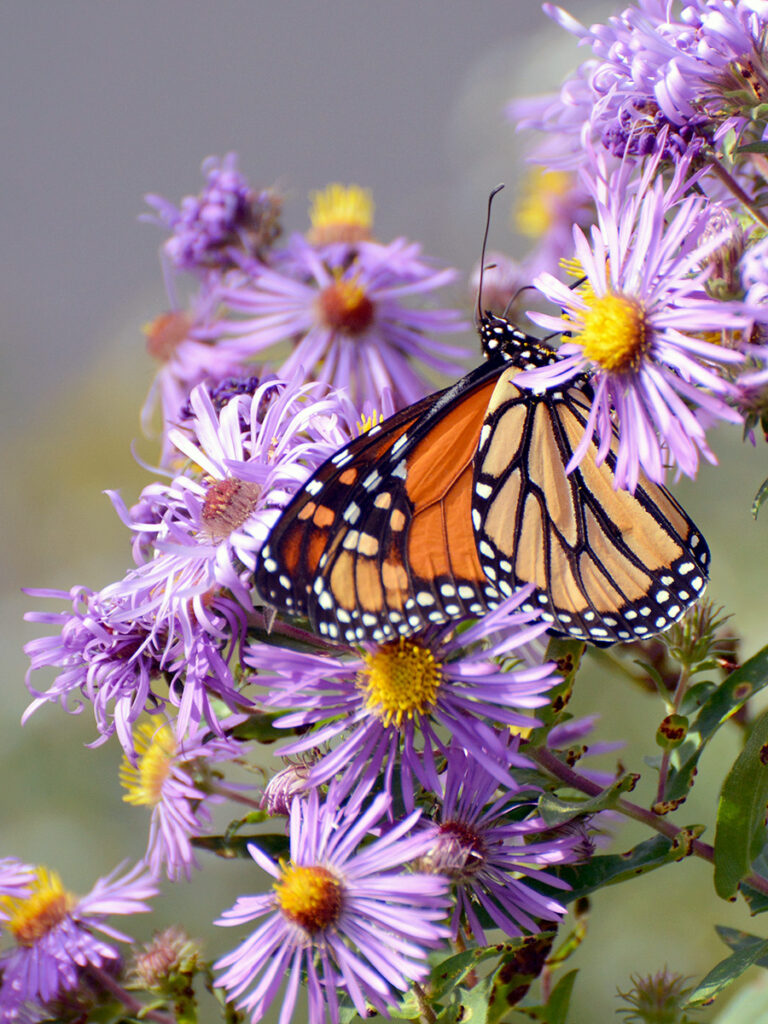
New England asters (Aster novae-angliae) and goldenrods (Solidago spp.) are a beautiful fall combo. Besides beauty, they’re a key source of nectar for monarchs, who are building up reserves for their migration.
In fact, monarch butterflies need fields of fall nectar all along their long journey to Mexico for the winter. It’s important that they reach their destination fit and fat!
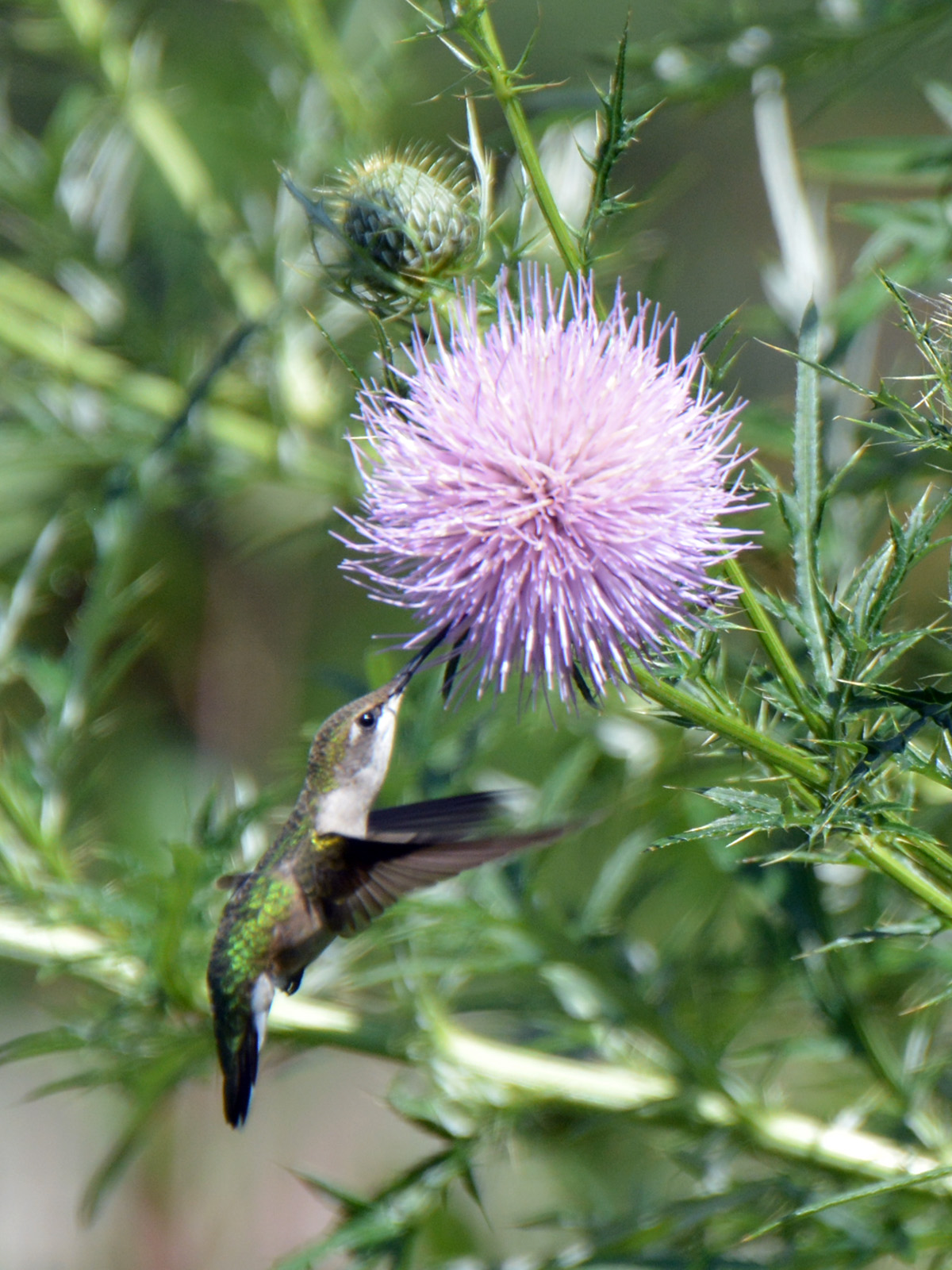
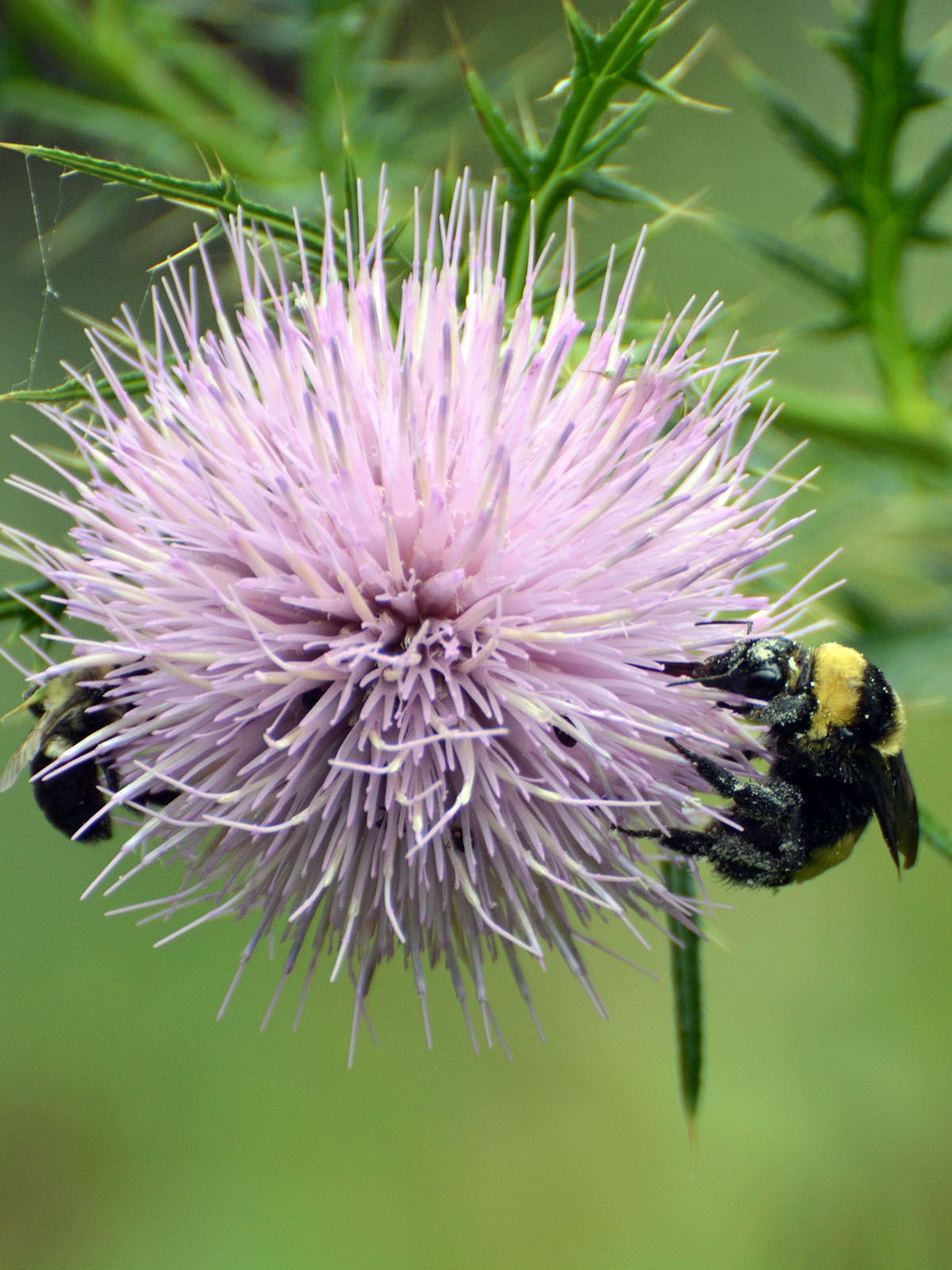
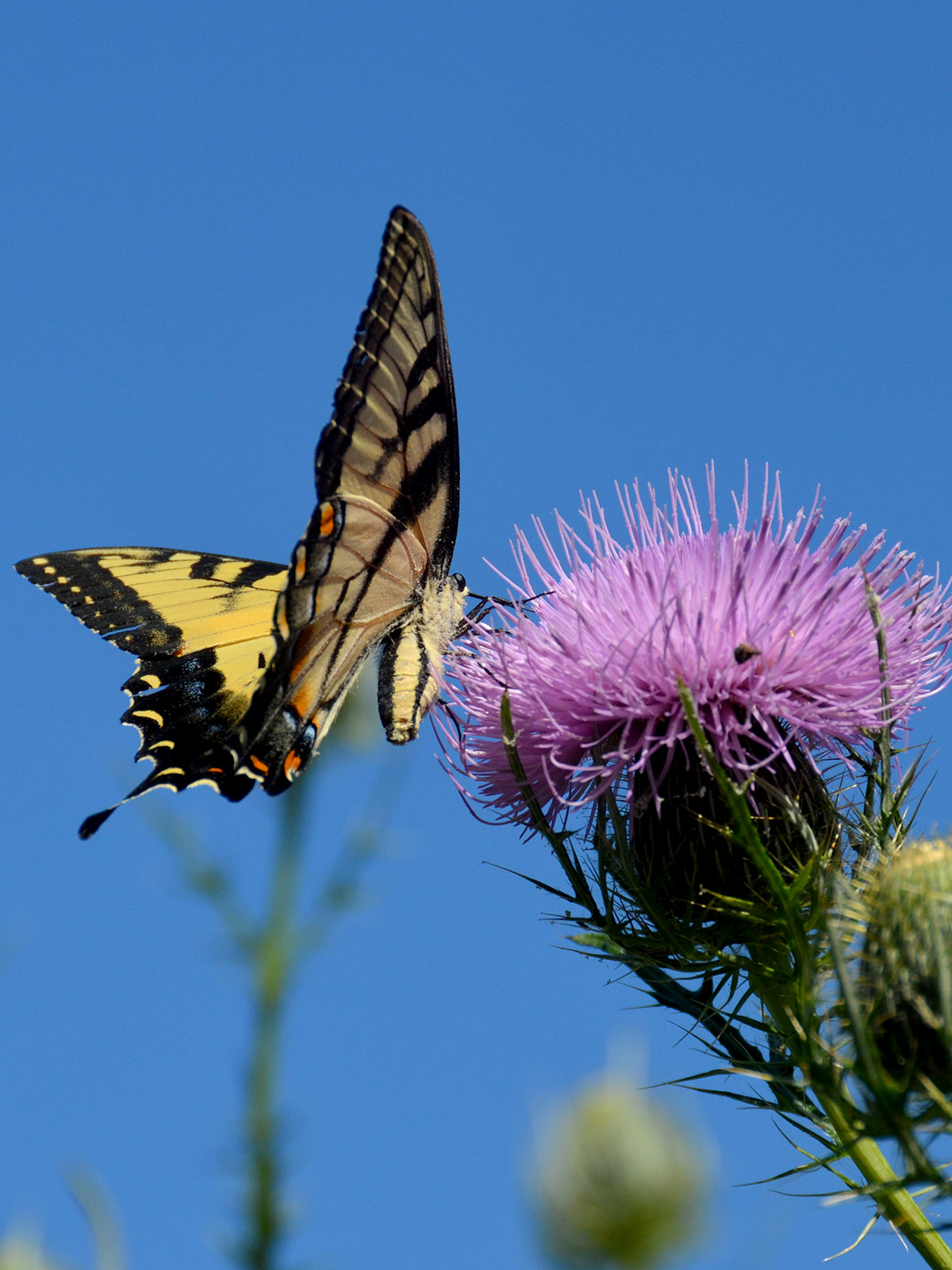
This NATIVE thistle (Cirsium discolor) provides nectar for hummers, bees, and butterflies.
Reflections
Since plants can’t move about in search of mates, most species rely on animals to pick up male pollen from the flowers of one plant and deliver it to the receptive stigmas in the flowers of another. For this service they pay a direct fee in the form of food rewards — nectar almost always, but often also a portion of their pollen. There is also overhead to pay: as in any business, indirect costs are incurred in advertising and conveniences offered to attract and keep customers. Bright pigments, for example, are an extra expense, as are the large nectar stores and extra-sturdy landing petals that bumble bees demand.
~ Sara Stein, Noah’s Garden p. 54
If wild rose blossoms are pink, single, and bloom in June, if wild rose hips are red, small, and hang on the canes all winter, then planting large-hipped everblooming yellow doubles is bound to sabotage someone’s expectations. Since a hybrid may look the part but carry hidden defects, I favor species. And since the genetic encyclopedia that plants carry was written in the historical context of their native land, I try to buy Americans.
(Note: It is clear from the passage from which this was taken that the “someone” she refers to is an insect.)
~ Sara Stein, Noah’s Garden p. 72
Tens of millions [monarchs] attempt the migration, but the death rate is appalling. During the months-long trip, each life depends on the late-blooming flowers at which it nectars: dots of yellow and purple, goldenrod and aster.
~ Sara Stein, Planting Noah’s Garden, p. 8
